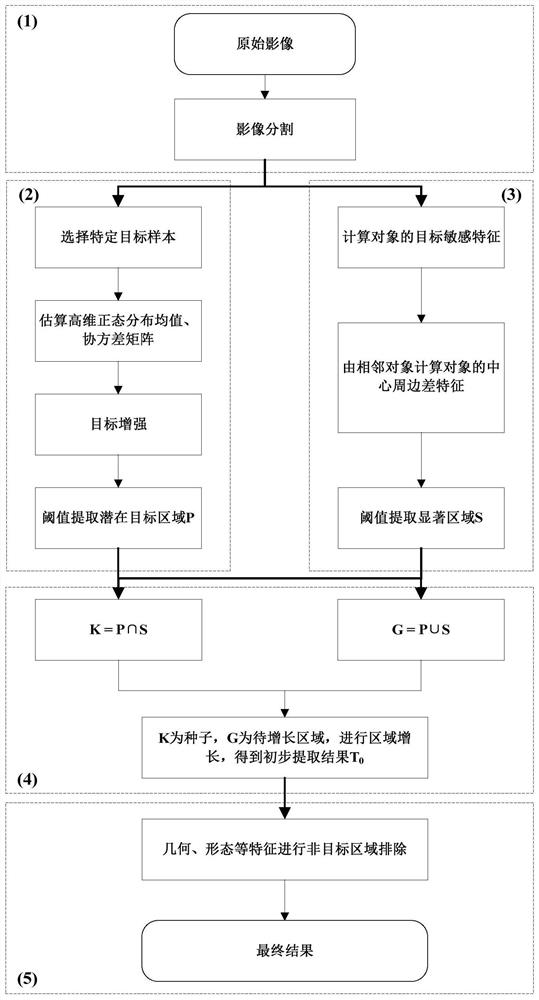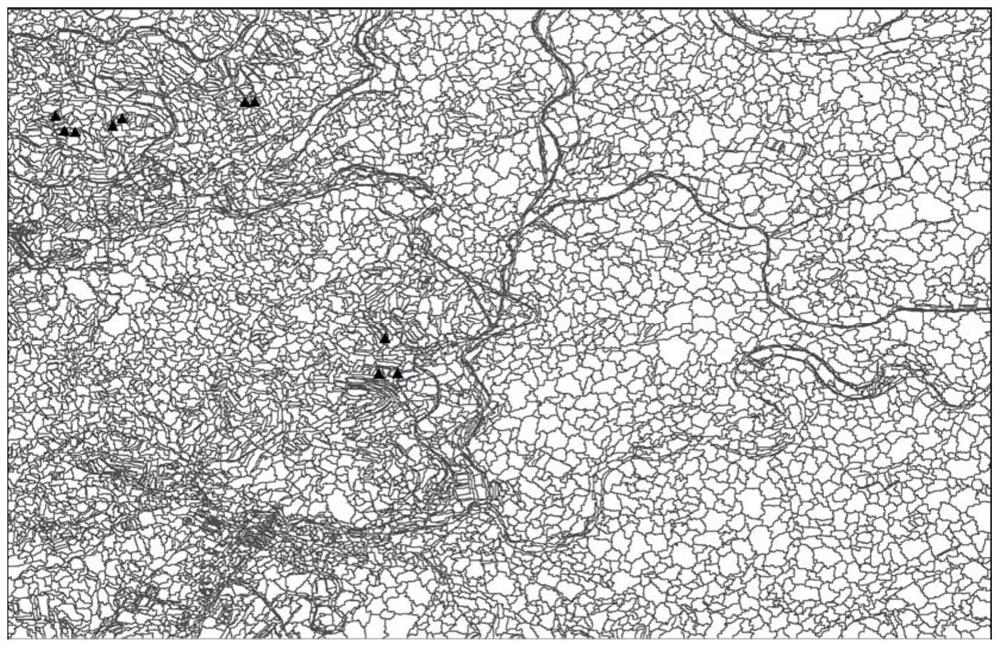A method for extracting salient surface specific targets in remote sensing images
A specific target and remote sensing image technology, which is applied in the direction of instruments, scene recognition, calculation, etc., can solve the problems of high cost, low accuracy of area, and blurred edges, etc., and achieve single type, high-precision extraction of position and area, and remarkable visual features Effect
- Summary
- Abstract
- Description
- Claims
- Application Information
AI Technical Summary
Problems solved by technology
Method used
Image
Examples
Embodiment Construction
[0046] The specific technical solutions of the present invention will be further described below in conjunction with the accompanying drawings.
[0047] The resolution of the original high-resolution remote sensing image processed by the method of the present invention is up to 6 meters, and the image size is 1292 columns × 2044 rows, and contains four wave bands, which are blue wave band (0.45-0.52 μm) and green wave band (0.52-0.59 μm). μm), red band (0.63-0.69μm), near-infrared band (0.77-0.89μm), radiation quantization level is 8bit, such as figure 2 shown. The target to be extracted is the human cultivation area.
[0048] Such as figure 1 As shown, the specific steps of the method for extracting the salient surface specific target in the remote sensing image of the present invention are as follows:
[0049] 1) According to the size of the specific target, the image is segmented at the optimal scale. In this embodiment, the Multiresolution Segmentation algorithm in Yika...
PUM
 Login to View More
Login to View More Abstract
Description
Claims
Application Information
 Login to View More
Login to View More - R&D
- Intellectual Property
- Life Sciences
- Materials
- Tech Scout
- Unparalleled Data Quality
- Higher Quality Content
- 60% Fewer Hallucinations
Browse by: Latest US Patents, China's latest patents, Technical Efficacy Thesaurus, Application Domain, Technology Topic, Popular Technical Reports.
© 2025 PatSnap. All rights reserved.Legal|Privacy policy|Modern Slavery Act Transparency Statement|Sitemap|About US| Contact US: help@patsnap.com



